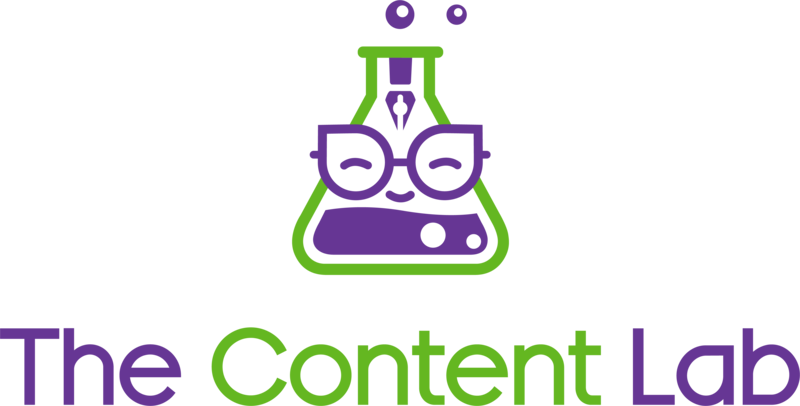Having written a fair few coaching websites at this stage, from sizzling sex coaches and fabulous fitness coaches to lovely life coaches, there’s one thing I know for sure…
I like alliteration
I.Love.Writing.Content.For.Coaches.
Learning all about how yous (that’s “y’all” in Irish-English) help people become the best version of themselves and solve life’s biggest challenges inherently motivates ME as I’m writing.
But more than that, writing content for coaches kinda gives me a sense of purpose. I feel like I’m helping people help others, and that makes me feel all warm n’ fuzzy inside. :’)
In fact, I love writing content for coaches so much that I’m dedicating this website copywriting guide to all my coaching friends out there.
So if you’re one of the coaches who feels an overwhelming rush of doubt when you face the blank page of doom. If you can’t help but get jealous of other coaches’ website content and how their words seem to just… flow, don’t worry.
It’s easy to feel stuck with website copy, especially when writing isn’t your primary forte. But I’m here to guide you through it, helping you to create powerful connections beyond the pixels with my eight top tips.
Writing content for a coaching website: What not to do.
Before I get into the must-do’s for coaching content, let me talk about a few must-don’ts. Do not under any circumstances:
- Copycat content: If your content sounds eerily similar to Coach Carter next door, you’ve gone off track. Originality, please!
- Use robot rookies: Using the likes of Chat GPT to write all your coaching content for you is a bad idea. Trust me, it’ll turn out repetitive, literally robotic-sounding, and just kinda “meh”.
- Empty promises: “Transform your life in 24 hours!” sounds enticing, but unless you’re a fairy godparent, let’s stick to reality.
- SEO overkill: Keyword stuffing is so 2005. If your content reads like a broken record of buzzwords, it’s time for a tune-up.
- Negative nelly: A little empathy goes a long way. Phrases like “Hate being depressed?” might get attention, but not the good kind. Let’s uplift, not off-put, ‘kay?
- Spellcheck skip: Would you believe 74% of readers are eagle-eyed when it comes to spelling and grammar? Don’t skip the proofreading people! One bad typo and you’re out.
My 8 must-do's when writing website content for coaches
Okay, cool, now we’ve gotten those coach content blunders out of the way (and yes, these are actual things I’ve seen on coaching websites), let’s get into the good stuff – the must-do’s.
1. Know your audience better than your bestie
Okay fine, fiiine; maybe not better than you know your bestie but honestly, coaches, it can’t be emphasised enough: you’ve gotta know your audience before you even think about typing!
The more you know your audience, the more targeted your coaching website content will be.
The more targeted your content is, the more likely it’ll resonate with your target audience.
And when your content resonates? That is when the magic happens.
So how do we do this?
- Feedback sessions: Check out forums or community groups where they hang out. Send out surveys. Maybe even interview your target audience 1:1. Do what you’ve gotta do to get a well-rounded understanding of their emotional state, pain points, needs, and desires.
- Personas are pivotal: Once you know all that good stuff, create personas of your ideal clients. Give them names, hobbies, and challenges they face. The more real they feel, the better you can speak to them.
- Audience monitoring: Friends change, and so does your audience. Keep revisiting your understanding, ensuring you’re always in the loop.
2. Use StoryBrand to captivate and convert

Segueing from the tip above, let’s chat about StoryBrand. This is a content writing framework we absolutely swear by at The Content Lab.
It’s about enveloping your audience in a narrative, positioning them as the hero and you as their guiding light.
Trust me; it’s a game-changer. When your audience can see themselves at the centre of your journey and the success they can achieve with you, that connection deepens tenfold.
Here’s how to use the StoryBrand framework:
(The short version)
- Step 1: Clarify your client’s journey: Begin with your hero (client), addressing their aspirations and the challenges they face. Next, position yourself as their guide, the wise mentor ready to navigate them through the thicket of their issues with your expertise.
- Step 2: Show the path to success: Outline a clear roadmap, showcasing the steps they’ll take with you. Incorporate engaging action prompts and highlight potential pitfalls they’ll sidestep with your guidance, making the journey not only clearer but also more enticing.
- Step 3: Envision the happy ending: Paint a compelling picture of their success post-journey, emphasising the transformation that awaits. Support this vision with success stories and testimonials, lending authenticity and amplifying the excitement of the journey ahead!
3. Develop your brand voice and keep it consistent
Behind every successful coach is a brand that emanates personality. Knowing your brand voice and tone will give you extra street cred, help you stand out, and make you more memorable with your target audience.
SO your job now is to get super clear on what that brand personality actually is.
Are you the nurturing mentor?
The no-nonsense guru?
The enigmatic visionary?
How to develop your coaching brand voice and tone:
Figuring out your brand archetype is a really good first step in developing your brand voice.
Oh, what is a brand archetype?
I’m glad you asked! *Clears throat*
A brand archetype is a universally-recognised character or symbol that encapsulates specific traits and behaviours. It’s a way to personify your coaching brand based on time-tested storytelling themes, making it instantly relatable and memorable.
Some classic examples include:
- The Hero: Brands that represent courage, determination, and going beyond limitations (think Nike).
- The Outlaw: Representing rebellion, disruption, and challenging the status quo (Harley-Davidson fits here).
- The Caregiver: Radiating protection, nurturance, and selflessness (Johnson & Johnson, for instance).
Consistency is everything: Once you know what kind of brand archetype you’re trying to emulate, ensure it echoes across all your coaching content. Consistency is key, and trust me, your audience will love how authentic and recognisably “you” your coaching content feels.
Psst: Don’t forget to check out Riley’s brand voice and tone guide to dig a little deeper!
4. Create crystal clear coaching packages
Confusion is the enemy of coaching conversions.
If your coaching packages or coaching content in general isn’t as clear as it could be, chances are potential clients will bounce.
Streamline information, ensure there’s zero ambiguity, and always, always back it up with a comprehensive FAQ section.
Remember: Your coaching website is like a silent salesperson – highlighting what’s included in your coaching services, handling sales objections, and promoting the sh*t out of what you do and why it’s so special.
If they’re giving conflicting information, leaving important bits out, or just generally confusing potential clients, your website becomes a salesperson you want to fire.
Need help? Here’s what to include in your coaching package content:
- Overview of the package
- Clear goals & benefits
- Session breakdown
- Tools & resources
- How you support them
- Bonus offerings
- Pricing & payment structure
- Testimonials
- FAQs
- Terms & conditions
5. Brevity: Because Less is Often More

Did you know that readers consume only 20% of a web page’s content? Mmhmm, yep, you read that right. But that doesn’t mean your website copy doesn’t matter. Quite the opposite.
Every word counts when you only have 20% of people’s attention.
SO
Lengthy narratives? A no-go.
Irrelevant rambles? Nu-uh!
Nitty gritty they don’t need to know? Leave it out.
Stick to the essence, break content with headings, bullet points, and ensure your message is loud and clear. Remember, a well-structured page keeps people scrolling!
6. Use wireframing to plan out your website user journey
Wireframing might sound techy and, well, it kind of is, but think of it as your website’s storyboard. It’s about plotting the user journey and ensuring your coaching content flows logically.
We wireframe out our coaching clients’ website content for them, so they (and their web designer/developer) can clearly see what copy/images/headlines/buttons go where and generally how it’ll all look on a web page.
The result?
You can easily envision how your final coaching website will look while ensuring a seamless experience for your potential clients, guiding them effortlessly from one section to the next.
To do it – you don’t need to get fancy with tools. You can literally draw a sketch of how each website page will look and what goes where.
I promise you, when it comes to writing the actual copy – everything will flow so.much.better.
7. SEO Simplified: Get found, get noticed
Search Engine Optimisation or “SEO” isn’t the monster many coaches believe it to be.
At its core, SEO is about making your content more appealing to search engines, more engaging for users, and easier to find when people are typing in things like “life coach near me” or “best sex coach for gay couples.”
Here are the basics of optimising your coaching content for SEO:
- Keyword research: Using tools like Google Keyword Planner (free!), SERanking, or SurferSEO, search for keywords that you think users will type into Google to find you. Choose the most relevant ones for each page on your website.
- Human-first copy: Weaving keywords into your content shouldn’t feel forced. Make sure the content still reads smoothly while incorporating your chosen keywords into the content.
- Meta magic: Your meta titles and descriptions are what people see on Google before they click into one of your website pages. Make them engaging while integrating keywords to entice searchers to click. Stick to 60-65 characters for the meta title and 155-160 characters for the meta description.
- Header hierarchy: Organise your text with H1, H2, and H3 tags and add keywords into these areas on your website. This structure is not only user-friendly but also lets search engines understand what the page is mainly about.
8. When words fail, call the content calvary
There’s no harm in admitting when you’re out of depth. If the words just aren’t flowing, professional website copywriters (😉) can bring in fresh perspectives, expertise, and that much-needed flair.
- Time’s a-ticking: Time saved is money earned. Let a copywriter handle the heavy word-lifting, freeing you up to focus on what you do best: coaching.
- Lost in translation no more: They speak fluent “audience.” A skilled copywriter deciphers and delivers your message in a way that resonates deeply with your target market.
- Error erasers: Goodbye, grammar gaffes and typos! A sharp-eyed copywriter ensures that your content is always polished to perfection.
- Seo sorcery: They don’t just write; they optimise. With SEO-savvy copywriters, your content doesn’t just stand out – it gets seen.
- Workshop wonders: A top-tier website copywriter will conduct a content workshop, helping you define and refine your brand voice for a pitch-perfect presence.
Wrapping up the web word wisdom
Wow, you’ve made it all the way down here without getting lost in cat videos, I’m impressed. Now that you’ve stolen all the coaching content secrets from my busy Irish brain, go forth, my child and get wordsmithing!
OR
(and that’s a big, beautiful “OR”)
Would you rather leave website copywriting to the coaching content professionals so you can get your time back and know your copy is on point?
We can help!
At the Content Lab, we’re content-obsessed word nerds, so you don’t have to be – crafting compelling websites, blogs, emails, and social media posts your coaching audience will love.
Ready to get started? Chat to our head honcho, Bosco, the dog. If Bosco is too busy barking at cats to pick up the phone, email our Head Content Strategist and Founder, Abby.


